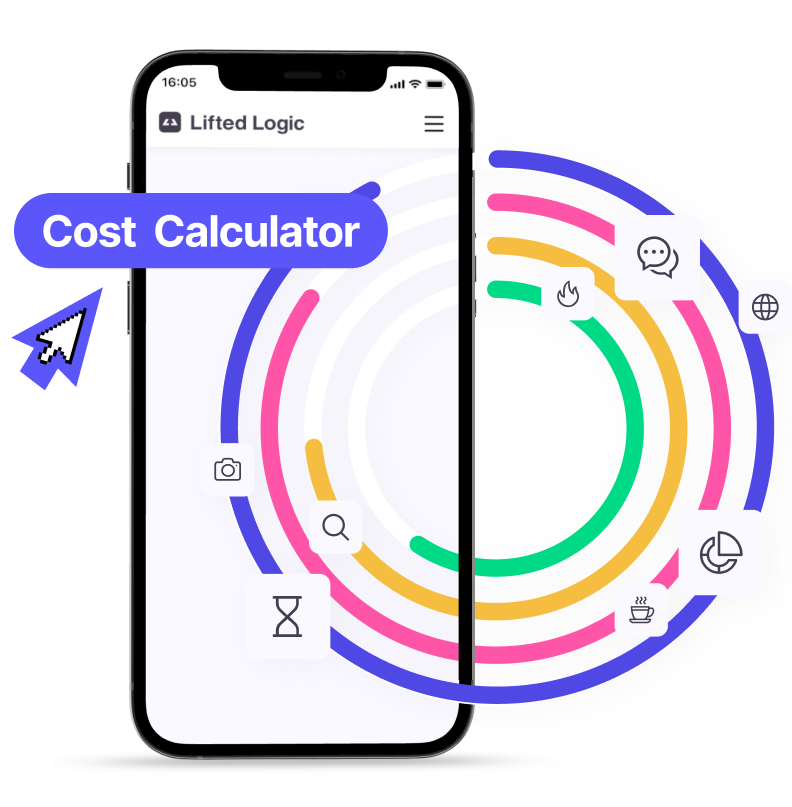An idea is a powerful thing. It’s where all great writing comes from. Unfortunately, ideas are only the beginning.
Most everyone, even non-writers, have had an idea for a story at some point. They’ve watched movies, read novels, and binged TV shows, and in that time, they think “I could do this!” But no matter how interesting your initial idea may be, the problem most often lies within the execution of that idea.
How do you turn a passing thought into a book, movie, video game, comic book, or—in this case—a blog? You do it with the help of an outline. Together, let’s go over some tips on how to outline a blog in the most effective manner possible.
Storytellers at Heart
You might know Lifted Logic as a web-design company, but really, our team is in the story-telling business. People come to us because they want to communicate with their users. They want anyone who visits their website to gain a quick and comprehensive understanding of their business and what they do.
It’s not as simple as uploading a text document and calling it a day. We want to engross users, to capture their attention. In the modern age, this is no easy task. But is an outline really the key to developing an interesting piece of content? And if so, how?
Jumping Right In
Many writers are tempted to just jump in and get writing. And for some, this works! It’s not inherently wrong to experiment on the page itself. Unfortunately, this method will invariably lead to lots and lots of rewriting.
Effective storytelling comes from set-up and payoff. Foreshadowing. Chekov’s gun. These all mean basically the same thing: introduce the important parts of your story or blog as soon as you possibly can. But you can’t know the important parts of your blog until you learn how to outline.
Bullet Time
Bullet points are your friend. They’re a simple shorthand tool for outlining a piece of writing. Don’t feel pressured to make them long (or even overly coherent). This is just for your own convenience. Write down everything that should be included in your work, like team introductions, product descriptions, and frequently asked questions.

What would you expect to see in a blog? What would you hope to see in a blog? At this stage, there are no bad ideas.
As you first learn how to write an outline, you may feel daunted by the task. But that’s the beauty of an outline: there’s no pressure. No one will ever see your scattered list of bullet points, so go wild. Root out the bad ideas and find the good ones.
A Strong Order
It might seem irrelevant, but pay special attention to how your ideas are ordered. This is what gives your blog structure. You don’t want to wait until the end of the blog to introduce your business; that’s something the audience will probably want to know from the get-go.
In that way, blogs are similar to news writing—we can’t rightly assume a user will read every word of your blog, so be sure to get the important information out as soon as possible.
If your reader is only going to read the first five sentences of your blog, then we want to make sure they’re good sentences.
What You Don’t Know Can Hurt You!
No one knows everything. As useful as it would be to have encyclopedic knowledge of every factoid and statistic, our minds just don’t have the storage space for that. So don’t be afraid to admit when you don’t know something.
The outlining process isn’t just for structuring our thoughts, it also helps us discover the gaps in our knowledge. We might come across a question about a product or business, and if we don’t have the answer, we just look it up or ask the client directly. Find a reputable source, and be sure to cite it in your blog.
End With a Bang
What’s a story without an ending? An outline should always end with three simple letters: CTA. This stands for “call to action.” The call to action is what provokes further user engagement. It nudges the reader forward, pushing them to visit a new page.
Generally, the CTA should be a direct statement that specifically addresses the audience. You want the audience member to feel seen, to feel spoken to. Tell—don’t ask—the reader to read more.
Expand on Your Ideas
Now that you have an ordered list of bullet points and sources, the hard part is over. The ideas are on paper, all you need to do is fill them out a little. And be sure to keep the client’s tone in mind.

When writing a blog, it’s best to pretend that you’re a reader with zero awareness of the business or product. This headspace allows you to better understand what your audience might be looking for in a blog. That’s all there is to it! You know how to outline a blog!
Read More Tips
At Lifted Logic, we want to share the wealth. Our team is hard at work developing content for dozens of different websites. We’ve seen (and written) a lot in our time, and we’ve learned a lot along the way.
If you have any questions about the web development process, take a look at our blog. There’s a good chance we have a resource available to help. And if we don’t, let us know! We’re always happy to help.
Interested in developing a website of your own? We can help with that. We’re always excited to meet with new clients so we can make your dream web page a reality.





